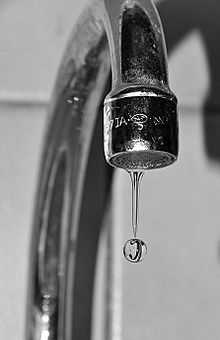Faucet aerator

A faucet aerator (or tap aereator) is often found at the tip of modern indoor water faucets. Aerators can be simply screwed onto the faucet head, creating a non-splashing stream and often delivering a mixture of water and air.
Function
An aerator serves the following purposes:
- prevent splashing
- shaping the water stream coming out of the faucet spout
- water conservation and reduction in energy costs
- reducing faucet noise
Faucet aerators are often used in homes with low water pressure in order to increase the perceived water pressure.
Design and Features
Three major components of an aerator are: housing, insert and rubber washer.
A faucet aerator can be classified on the basis of its flow rate and the type of water stream (aerated, non-aerated, spray) it produces. In general, standard-sized aerators are available with female (M22x1) or male threading (M24x1). Bathtub spouts often have a bigger diameter with a male M28x1 thread. The United States use different thread sizes: 15/16"-27 for standard-sized male and 55/64"-27 for standard-sized female threads.
Using faucet aerators may help meet local regulations and construction standards such as ASME A112.18.1, U.S. Leadership in Energy and Environmental Design (LEED) certifications[1] or WELS (Australia/New Zealand). In Europe, European standard EN246 "Sanitary tapware - General specifications for flow rate regulators" defines the flow rate and noise reduction requirements.